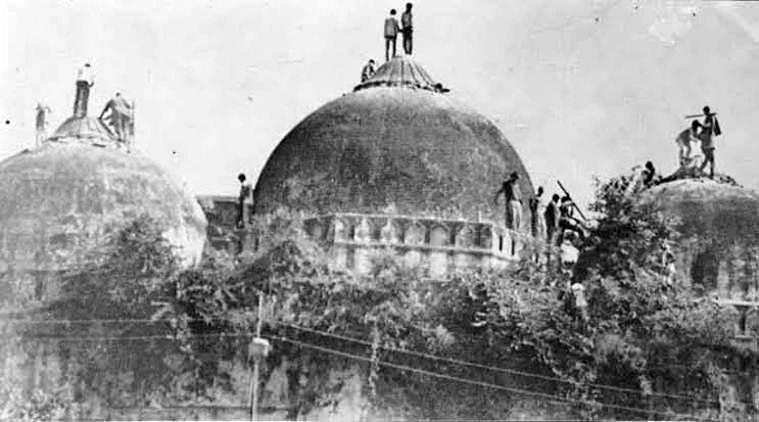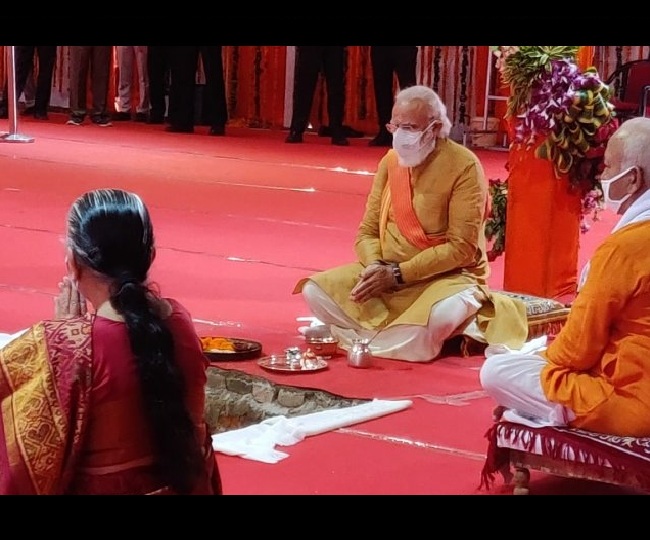The day of August 5, 2020, has been recorded in golden letters in the history of Ram temple. From 1528 to 2020, there were many turns in the history of 492 years. Some milestones were also crossed. Especially the day of 9 November 2019 when the 5-judge Constitutional Bench gave the historic verdict. The Ayodhya land dispute case was one of the longest-running cases in the country. We will tell you when the foundation of this dispute was laid and the important milestones in history so far.
The year 1528
The year Baqi, the warlord of Mughal emperor Babur, built a mosque at the disputed site. The Hindu community claimed that this place is the birthplace of Lord Rama and there was an ancient temple here. As per the Hindu side, below the main dome was the birthplace of Lord Rama. The Babri Masjid had three domes.
Between 1853 and 1949:
In 1853 there were riots around this place for the first time. In 1859 the English administration erected fences around the disputed site. Muslims were allowed to worship inside the structure and Hindus on the outside. The real controversy began on 23 December 1949, when the idols of Lord Rama were found in the mosque. Hindus said that Lord Rama appeared, while Muslims alleged that someone quietly kept the idols there at night. The UP government ordered the removal of the idols, but District Magistrate (DM) KK Nair expressed his inability to carry out the order out of fear of riots and instigation of Hindu sentiments. The government got it locked as a disputed structure.
The year 1950:
Two applications were filed in Faizabad Civil Court. In this, permission was given to worship Ramlala in one and permission to keep the idol of Lord Ram in the disputed structure in the other. In 1959, Nirmohi Akhada filed a third application.
The year 1961:
The UP Sunni Waqf Board filed an application demanding the possession and sculptures of the disputed site.
The year 1984:
The Vishwa Hindu Parishad set up a committee in 1984 to build a temple in place of the disputed structure.
The year 1986:
On the petition of U.C. Pandey, on 1 February 1986 District Judge KM Pandey of Faizabad, allowed Hindus to worship. He ordered to remove the lock.
6 December 1992:

Lakhs of the activist of various Hindu organizations including VHP( Vishawa Hindu Parishad) and Shiv Sena demolished the disputed structure. Communal riots broke out across the country, in which more than 2 thousand people were killed.
The year 2002:
A train carrying Hindu activists was set on fire in Godhra, killing 58 people. After which riots broke out in Gujrat killing more than 2 thousand people.
The year 2010:
The Allahabad High Court, in its judgment, ordered the disputed site to be divided into 3 equal parts between the Sunni Waqf Board, Ramlala Virajaman and Nirmohi Akhara Dal.
The year 2011:
The Supreme Court put a stay on the judgement of the Allahabad High Court on the Ayodhya dispute.
The year 2017:
Supreme Court called for an out-of-court settlement. Charges of criminal conspiracy reinstated on top BJP leaders.
8 March 2019:
The Supreme Court sent the case for arbitration. A panel was formed headed by former Supreme Court judge F M Kallifulla and gave it eight weeks to complete the process. The other members of the panel were spiritual guru Sri Sri Ravishankar and senior advocate Sriram Panchu.
August 2019:
Arbitration panel submitted its report. Supreme Court said arbitration panel failed to resolve the case. On 6th August 2019, daily hearing of Ayodhya case started in Supreme Court.
October 2019:
Ayodhya case hearing got completed. The Supreme Court reserved the verdict.
November 2019:
On November 9, a five-judge bench of the Supreme Court ruled in favour of the Ram temple. 2.77 acres of disputed land was awarded to Hindu side. And an order was issued to provide 5 acres of land separately for the mosque.
25 March 2020:
Nearly 28 years later, Ramlala shifted from tent to temple of Nickle Fibre.
5 August 2020:

‘Bhoomi Poojan’ program of Ram temple was organised. Over 175 guest including PM Narendra Modi, RSS chief Mohan Bhagwat, UP CM Yogi Adityanath and saints across the country were invited. PM Modi first appeared at Hanumangarhi after reaching Ayodhya and then completed the Bhoomi Poojan program of Ram Mandir.
Also read: Asia’s largest single-site solar power project has been inaugurated by PM Modi
